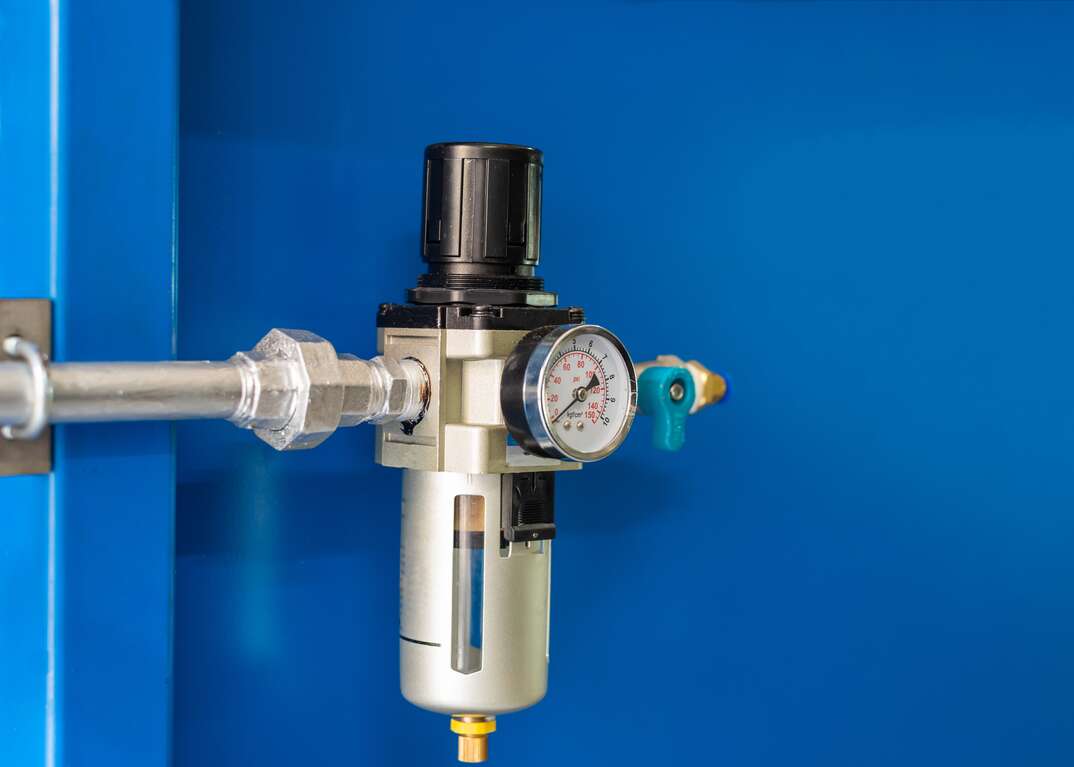- AppliancesElectriciansHVACLandscapingLocksmithPest ControlPlumbingRenovationRoofingT V RepairAll Home Improvement
- Car AccidentClass ActionCorporate LawCriminal DefenseDivorce LawEmployment LawFamily LawFinancial LawLegal AidMedical Injury LawyersMedical MalpracticeReal Estate LawWater Fire RestorationAll Legal
- InvestmentRetirementAll Finance
- Animal InsuranceAutoGeneral InsuranceHealth PolicyHome RentersAll Insurance
- DentalHealth SpecialistsAll Medical
- Animal CareVeterinaryAll Pets
- Auto GlassTowingAll Automotive
What Is a Water Pressure Regulator and What Does It Do?

If you’ve ever wondered about the elusive water pressure regulator in your home, wonder no more.
In this guide, we demystify its whereabouts and unravel the secrets behind its appearance, functionality and maintenance.
The water pressure regulator is typically outdoors, just past the main shut-off valve for your water supply. However, the exact location is determined by your home's plumbing setup.
Other possible locations include:
- In the meter box, which is usually attached to the curb or sidewalk in front of your house
- In your basement or crawl space, often where the main water line enters your house
- It might be in the garage if you live in an older home
What Does a Residential Water Pressure Regulator Look Like?
A residential water pressure regulator typically looks like a dome-shaped brass fitting with an adjustment screw on top. It’s usually colored red to indicate it’s a pressure-reducing valve.
Other distinguishing features include:
- A relief valve that prevents the pressure from rising too high
- A gauge indicating the current water pressure
- A seal to prevent it from leaking
- Threads connecting it to the main water line
A water pressure reducer, also known as a pressure-reducing valve (PRV), reduces the pressure of water entering a home to safe and manageable levels. Water entering the regulator pushes against a spring-loaded diaphragm, which then moves a piston or disc to control the flow of water.
Other components include:
- A spring that applies pressure to the diaphragm, controlling the amount of water flowing through the regulator
- A strainer to remove debris and impurities from the water
- A pressure gauge that indicates the current water pressure
How Long Do Water Line Pressure Regulators Last?
Most water pressure regulators are designed to last for 4-12 years, but several factors determine their life span, including the build quality and your home’s water pressure.
Other determining factors include:
- Contaminants in the water, such as calcium and magnesium ions
- Wear and tear, if your home has a lot of plumbing fixtures
- The regulator’s age
Common Signs of Water Pressure Regulator Problems
Water pressure regulators are reliable, but they can have problems. If you spot any of these, you should contact a qualified plumber ASAP.
Common signs of problems to look out for include:
- A decrease in water pressure throughout your house
- Thumping, banging or hammering noises coming from the pipes
- Water leaking from the regulator
- Consistent instances of extremely high or low water pressure throughout your house
- Damage to your faucets, toilets or other fixtures
More Related Articles:
- Calling a Plumber? Here Are the 6 Most Common Plumbing Jobs and How Much They Cost
- 6 Ways to Try to Unclog Your Sink Before You Call a Plumber
- What's in My Plumber's Van?
- Here's How Much It Costs to Remodel a Bathroom
- 6 Tips for Hiring a Plumber
What PSI Should a Pressure-Reducing Valve Be Set At?
The recommended psi for a pressure-reducing valve (PRV) in a residential setting is typically between 40 and 80 psi. However, the specific setting may vary depending on the age of your home, the type of plumbing fixtures you have and your local water pressure.
Here are some tips for maintaining your PRV:
- Have it inspected and serviced by a qualified plumber every three to five years.
- Check its pressure gauge regularly to make sure it’s reading the correct pressure.
- If you’re experiencing any problems with your plumbing, have your PRV checked immediately.
How Do I Adjust My Home Water Pressure Regulator?
Adjusting your home water pressure regulator is a relatively straightforward process. However, it’s important to follow the steps carefully and avoid making any drastic or forceful adjustments.
Here’s a step-by-step guide:
1. Turn off the water supply.
2. Loosen the water pressure regulator’s locknut with a wrench or pliers.
3. Turn the adjustment screw slowly clockwise to increase the water pressure or counterclockwise to decrease the pressure.
4. Wait a few minutes for the pressure to stabilize, then check the pressure gauge to see the current water pressure.
5. If necessary, adjust the screw further in small increments until the pressure reaches the recommended level.
6. Retighten the locknut.
7. Turn on the water supply.
8. Recheck the pressure.
Do I Need a Water Pressure Regulator?
It depends on the water pressure in your area. If it consistently surpasses 80 psi, you should install a pressure regulator.
Other indications include:
- Loud banging noises emanating from your pipes
- Frequent variations in water pressure throughout your plumbing system
- Signs of corrosion or visible damage to your pipes
- A sudden and unexpected surge in your water bill
Elocal Editorial Content is for educational and entertainment purposes only. Editorial Content should not be used as a substitute for advice from a licensed professional in your state reviewing your issue. Systems, equipment, issues and circumstances vary. Follow the manufacturer's safety precautions. The opinions, beliefs and viewpoints expressed by the eLocal Editorial Team and other third-party content providers do not necessarily reflect the opinions, beliefs and viewpoints of eLocal or its affiliate companies. Use of the Blog is subject to the
Website Terms and Conditions.The eLocal Editorial Team operates independently of eLocal USA's marketing and sales decisions.



